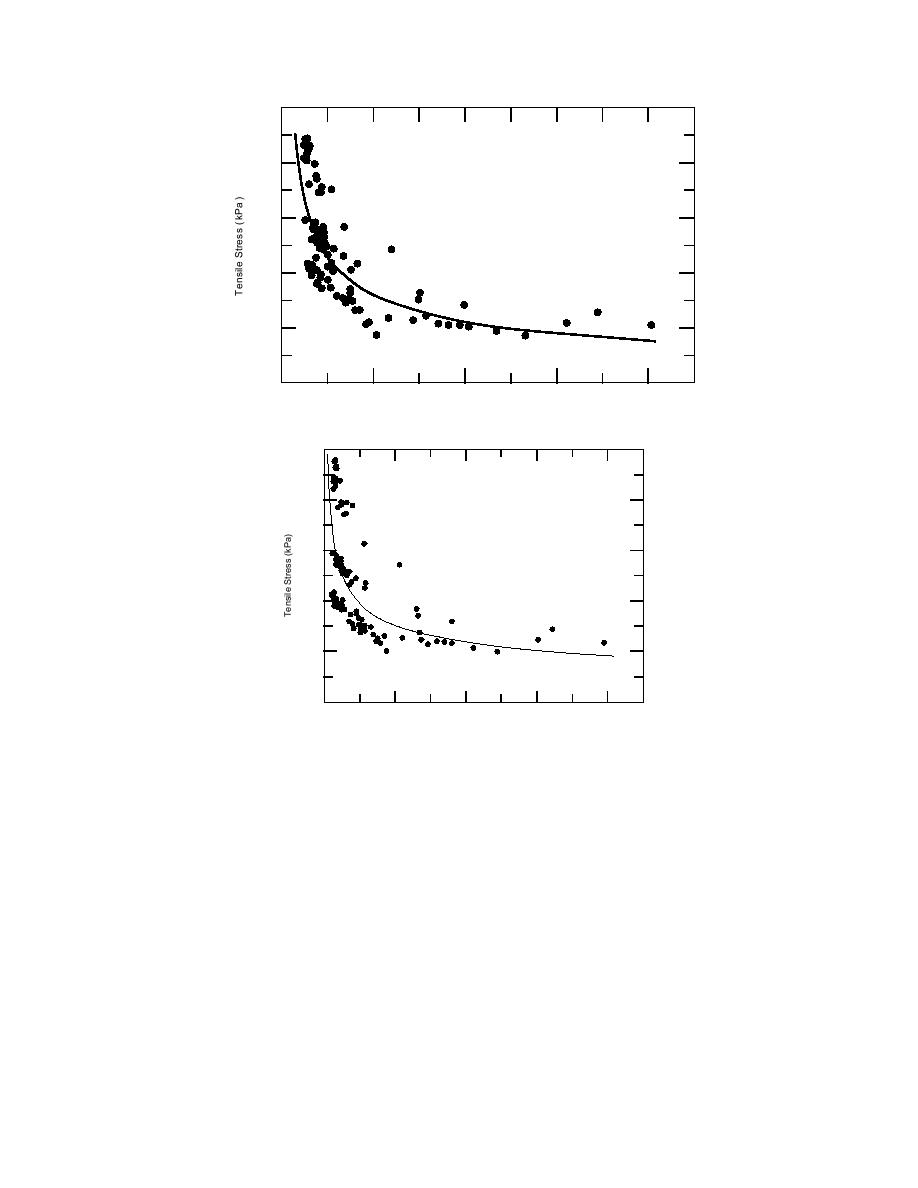
5000
Boeing 757
y = 41732x 0.5493
4000
R 2 = 0.69
3000
2000
1000
0
400
800
1200
1600
Subgrade Modulus ( MPa )
a. Boeing 757.
5000
MD DC 9
y = 10973x 0.3744
4000
R 2 = 0.54
3000
2000
1000
0
200
400
600
800
k, Coefficient of Subgrade Reaction (MN/m3 )
b. MD-DC9.
Figure 33. Effect of the coefficient of subgrade reaction, k, on the horizontal
tensile stress at the bottom of the PCC layer.
Since we found damage to be a function of thickness, σh
the other relationships. Small differences were obtained
for the Boeing 757 and the MD-DC9.
was developed as a function of Es or k and the coeffi-
The following equation could be used to estimate the
cient of thickness. We found that the correlations in-
horizontal stress σh as a function of the subgrade modu-
creased when thickness was taken into consideration.
lus Es (MPa) during the spring thaw
σh= 7360 1.5Es 17t
σh =
41, 732 Es0.549 .
or
We observed a similar trend between the horizontal
σh= 7389 13.02k 17.5t
strain and the coefficient of subgrade reaction. The fol-
lowing equation could be used to estimate the horizontal
stress (σh) as a function of the coefficient of subgrade
where t is PCC thickness (mm).
reaction, k (MN/m3) during the spring thaw
The relationship between the total basin area and the
horizontal stresses (σh) at the bottom of the PCC layer is
σ h = 12, 436 k 0.411.
shown in Figure 35. A linear trend was applied to the
28



 Previous Page
Previous Page
